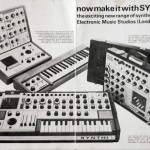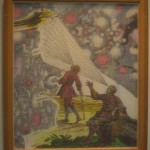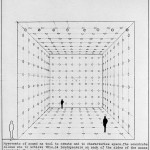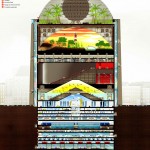Tango is certainly a prodigy of pre-digital animation.
The experimental short video shows thirty-six characters interacting in one room, moving in loops just like alienated monads. Winning of an Academy Awards in 1983, this almost artisanal work inspired later well-known short music videos directors (Michel Gondry for Kylie Minogue’s Come in to My World, Garth Jennings for R.E.M.’s Imitation of Life, Mark Kohr for Green Day’s Redundant — information from No Fat Clips)
Zbigniew Rybczyński, polish filmaker, pioneer of digital animation and HDTV techniques, recalls of the making-of of his work:
“I had to draw and paint about 16.000 cell-mattes, and make several hundred thousand exposures on an optical printer. It took a full seven months, sixteen hours per day, to make the piece. The miracle is that the negative got through the process with only minor damage, and I made less than one hundred mathematical mistakes out of several hundred thousand possibilities. In the final result, there are plenty of flaws, black lines are visible around humans, jitters caused by the instability of film material resulting from film perforation and elasticity of celluloid, changes of colour caused by the fluctuation in colour temperature of the projector bulb and, inevitably, dirt, grain and scratches.”
(Zbig Rybczynski –Looking to the Future – Imagining the Truth,” in FranÐois Penz, Maureen Thomas, Cinema& Architecture. Mþliús, Mallet-Stevens, Multimedia, BFI, London, 1997 )
I would love to see the following diagrams in a larger format. Anyone?

UPDATE:
Thanks from Juan Campanini, we have now two larger diagrams more:


Roger Noake, describing Tango:
“In Tango, Rybczynski exploits this concept of the single offscreen space by filling it with a plethora of actions. It soon becomes obvious that such a small space, that of a small room, could not possibly contain all the actions taking place. Rybczynski also makes critical use of off-screen space, exposing it for the artifice it is. Off-screen space is the imaginary area beyond the edge of the screen, and in front of or behind the camera. There are a number of ways through to off-screen space in Tango – a window and a door in the back wall, doors on either side of the room, and cupboard which also has its uses. Rybczynski orchestrates his entrances and exits with great precision.”
(Roger Noake, Animation Techniques, Secaucus, Chartwell Books Inc., 1988.)



Via: No Fat Clips and AIAP on Facebook





amazing! thank you for finding and sharing this!
At last a version (not on tattered VHS) that can be used properly for educational purposes! This film was one inspiration for a scene my play Jumping on my Shadow in 2002. It also inspired I’m sure (more commercially) the UK Ariston adverts of the (?) 1990s
Bellissima sequenza di tante dimensioni di vita differenti che utilizzano, inconsapevoli, lo stesso spazio e lo stesso tempo.
Un unico oggetto viene condiviso fra la prima e l’ultima presenza, chiudendo il cerchio delle azioni, ed è il pallone.